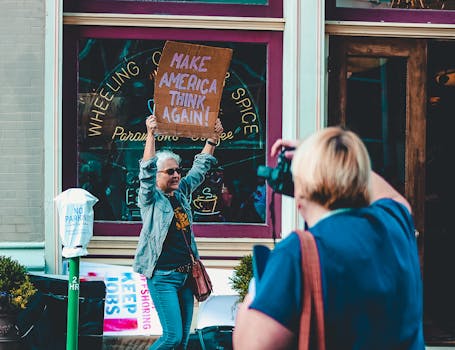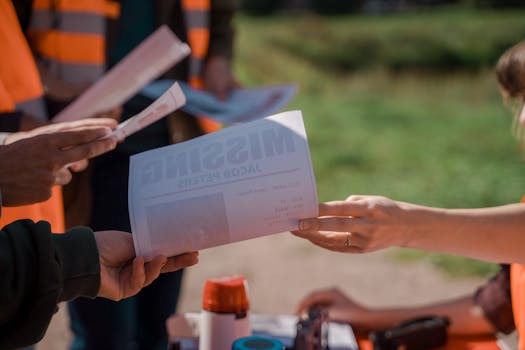
data-usecase-icon="recurring_donations"
Cercle des champions de la justice
Invitez les sympathisants à rejoindre un cercle de donateurs mensuels qui soutiennent les efforts de plaidoyer et de politique à long terme grâce à des contributions prévisibles et gratuites.
data-usecase-cta="recurring_donations" (dons récurrents)
data-usecase-icon="donation_form"
Fonds de réaction rapide et de plaidoyer
Lancer un formulaire d'appel ciblé pour collecter des dons d'urgence pour des batailles juridiques critiques ou des crises communautaires, afin de s'assurer que les fonds sont disponibles lorsqu'ils sont les plus importants.
data-usecase-cta= "donation_form"
data-usecase-icon="peer_to_peer"
Voices for Change Rallye de pair à pair
Permettre aux bénévoles et aux sympathisants de créer des pages personnelles de collecte de fonds, de diffuser largement la campagne et d'obtenir des contributions de la base pour des initiatives marquantes.
data-usecase-cta="peer_to_peer"
data-usecase-icon="event"
Vente de billets pour le Sommet de l'égalité
Vendez des billets pour votre conférence annuelle ou votre sommet virtuel axé sur l'éducation aux droits civiques, le réseautage et les ateliers politiques afin d'élargir votre base de donateurs.
data-usecase-cta="event"
data-usecase-icon="vente aux enchères"
Vente aux enchères silencieuse pour les droits civils
Organisez une vente aux enchères silencieuse en ligne ou en personne avec des œuvres d'art, des expériences et des services offerts, afin de mobiliser les donateurs et de collecter des fonds non affectés.
data-usecase-cta="vente aux enchères"
data-usecase-icon="adhésion"
Programme d'adhésion Ally
Créez des niveaux d'adhésion qui offrent des séances d'information exclusives, des bulletins d'information et un accès aux coulisses, transformant ainsi des donateurs ponctuels en alliés engagés.
data-usecase-cta="adhésion"
Comment Zeffy se compare-t-il aux autres plateformes de collecte de fonds pour Groupes de défense des droits civiques et de plaidoyer
Frais | Vous gardez | Vous perdez | ||
|---|---|---|---|---|
0 % de frais de plateforme et de traitement | $50,000 | $0 | ||
2,9 % + 0,30 $/transaction | $48,400 | -$1,600 | ||
2,2 % + 0,30 $ + ~2,35 % de frais de plateforme | $47,500 | -$2,500 | ||
2,9 % + 0,30 $/transaction | $48,350 | -$1,650 | ||
3,7 % + 1,79 $/billet + 2,9 % de frais de traitement | $46,550 | -3 450 $ (estimation) | ||
1.99% + $0.49 | $48,560 | -$1,440 |
100% gratuit, toujours.
Les 6 meilleures idées de collecte de fonds pour les Groupes de défense des droits civils et de plaidoyer
🍋 Lemonade for Liberation
Les sympathisants organisent des stands de limonade dans les quartiers ; tous les bénéfices servent à financer des programmes de défense des droits civiques et à sensibiliser la population.
Rallye cycliste "Pedal for Progress" (Pédalez pour le progrès)
Les cyclistes collectent des promesses de dons par kilomètre sur un itinéraire estival, ce qui permet de financer des actions de sensibilisation tout en rassemblant des communautés pour défendre les droits civiques.
🎨 Art & Activism Street Fair
Des artistes locaux vendent des œuvres sur le thème des droits, en reversant une partie des ventes ; la communauté apprécie l'art, la musique et s'informe sur les causes à défendre.
Concours photo #RightsInFocus
Les participants paient un droit d'entrée modique pour soumettre des photos sur le thème des droits civiques ; les votes publics permettent de désigner les gagnants et de financer le travail en faveur de la justice.
🎤 Voix du changement Microscope ouvert
Organisez un micro ouvert en plein air où les activistes partagent leurs histoires ; les participants font des dons ou achètent des billets pour soutenir les campagnes de défense des droits civiques.
💻 Défi d'action des alliés virtuels
Une série d'engagements numériques estivaux : les partisans s'engagent à mener des actions hebdomadaires en faveur des droits civiques et à collecter des dons de pair à pair par le biais de partages sociaux.
Envie de plus d'inspiration ?
Découvrez plus de 40 groupes gratuits Groupes de défense des droits civils et de plaidoyer idées de collecte de fonds
Principales subventions pour Groupes de défense des droits civils et de plaidoyer en 2025

Subventions pour la défense des intérêts et la collaboration
Académie américaine de psychiatrie de l'enfant et de l'adolescent (AACAP)
Jusqu'à 4 000
Elle soutient les actions locales et nationales visant à améliorer les soins de santé mentale pour les enfants, avec une date limite fixée au 31 août 2025.

Bourse Hand to Hand 2025
Fondation de la communauté côtière
$5,000 - $15,000
Ce programme soutient des projets visant à promouvoir l'autosuffisance économique et les changements positifs pour les femmes et les jeunes filles, avec une date limite fixée au 15 juillet 2025.

Fonds pour un logement sûr et stable Subvention pour la jeunesse 2025
Fondation de la communauté côtière
$10,000 - $40,000
Soutient des programmes assurant le bien-être des jeunes dans le comté nord de San Diego, avec une date limite fixée au 31 juillet 2025.
Principales entreprises qui font des dons à Groupes de défense des droits civiques et de plaidoyer en 2025

Walmart
Soutien aux organisations à but non lucratif dans le domaine de l'éducation par le biais de subventions locales et des programmes Spark Good

NAACP
Partenariat avec des entreprises et des fondations pour faire progresser les droits civils et la justice sociale

Campagne des droits de l'homme (HRC)
Reconnaît les entreprises partenaires pour leur engagement en faveur de l'égalité et des droits des personnes LGBTQ

Cible
Soutenir les communautés et les questions sociales/environnementales par le biais de subventions et de programmes de dons locaux
Questions fréquemment posées
Zeffy est-il vraiment 100% gratuit pour les groupes de défense des droits civils ? Quel est le problème ?
Oui, Zeffy est 100% gratuit pour les groupes de défense des droits civiques et de plaidoyer ! Il n'y a pas de frais de plateforme, de frais de traitement ou de coûts cachés. Nous comptons sur les dons facultatifs des donateurs qui veulent soutenir notre mission pour que tout reste gratuit pour les groupes de défense des droits comme le vôtre. Il n'y a pas de piège !
Les groupes de défense des droits civils et les groupes de pression peuvent-ils utiliser Zeffy pour collecter des dons ?
Absolument ! Les groupes de défense des droits civiques et de plaidoyer peuvent utiliser Zeffy pour collecter des dons, recevoir des billets d'événements et mettre en place des dons récurrents, le tout sans frais. Chaque dollar collecté est directement affecté au soutien de vos activités de plaidoyer.
Quels types de campagnes de collecte de fonds les groupes de défense des droits civils et de plaidoyer peuvent-ils mener avec Zeffy ?
Les groupes de défense des droits civiques et de plaidoyer peuvent mener diverses campagnes de collecte de fonds avec Zeffy, y compris des collectes de fonds de pair à pair, des événements à billets et la mise en place de dons récurrents. Quels que soient vos objectifs, Zeffy est là pour vous aider à les atteindre sans frais.
Quelle est la meilleure plateforme de collecte de fonds pour les groupes de défense des droits civils et de plaidoyer ?
Zeffy est la seule plateforme de collecte de fonds 100% gratuite pour les groupes de défense des droits civiques et de plaidoyer. Contrairement à d'autres plateformes qui facturent des frais de traitement ou des coûts cachés, Zeffy garantit que plus d'argent va directement à votre travail de plaidoyer. Avec Zeffy, il n'y a pas de petits caractères, juste plus de ressources pour votre cause.













